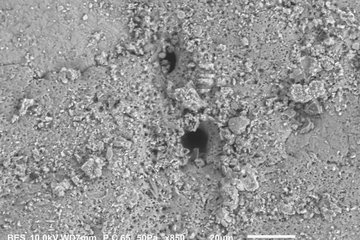How easily we tan is influenced by Neandertal DNA
Neandertal DNA influences variation in skin tone and hair colour in people living today
After humans and Neandertals met many thousands of years ago, the two species began interbreeding. While Neandertals aren’t around anymore, about two percent of the DNA in non-African people living today comes from them. Recent studies have shown that some of those Neandertal genes have contributed to human immunity and modern diseases. Now researchers have found that our Neandertal inheritance has contributed to other characteristics, too, including skin tone, hair colour, sleep patterns, mood, and even a person’s smoking status.

Inspired by an earlier study that found associations between Neandertal DNA and disease risk, Janet Kelso at the Max Planck Institute for Evolutionary Anthropology in Germany says her team got interested in exploring connections between Neandertal DNA and characteristics unrelated to disease. Because Neandertal alleles are relatively rare, the researchers needed data representing a really large number of people. They found what they were looking for in data representing more than 112,000 participants in the UK Biobank pilot study. The database includes genetic information along with information on many traits related to physical appearance, diet, sun exposure, behaviour, and disease.
“We can now show that it is skin tone, and the ease with which one tans, as well as hair colour that are affected,” Kelso said. The researchers observe multiple different Neandertal alleles contributing to skin and hair tones. What they found somewhat surprising is that some Neandertal alleles were found in association with lighter skin tones and others with darker skin tones. The same was true for hair colour. “These findings suggest that Neandertals might have differed in their hair and skin tones, much as people now do,” adds Michael Dannemann, first author of the study.
Furthermore the researcher noticed that Neandertal DNA also influences traits like mood, smoking behaviour and sleep patterns. For example, people with particular Neandertal variants tend to be smokers more often, while other Neandertal DNA is found more frequently in “night people”. Kelso notes that many of the traits influenced by Neandertal DNA, including skin and hair pigmentation, mood, and sleeping patterns are linked to sunlight exposure. When modern humans arrived in Eurasia about 100,000 years ago, Neandertals had already lived there for thousands of years. They were likely well adapted to lower and more variable levels of ultraviolet radiation from the sun compared to the new human arrivals from Africa.
“Skin and hair colour, circadian rhythms and mood are all influenced by light exposure,” the researchers wrote. “We speculate that their identification in our analysis suggests that sun exposure may have shaped Neandertal phenotypes and that gene flow into modern humans continues to contribute to variation in these traits today.”
Cell Press, SJ/HR












